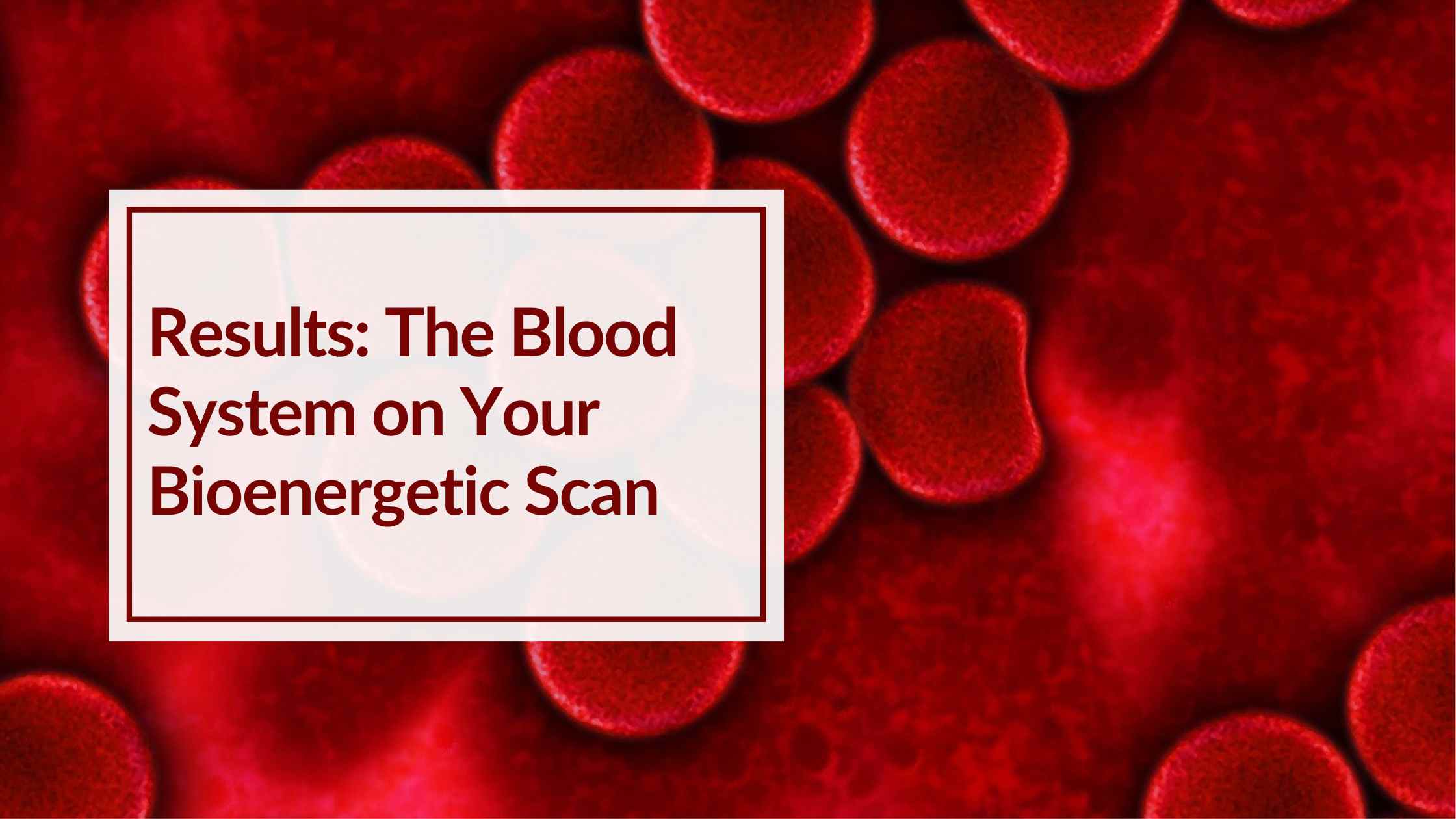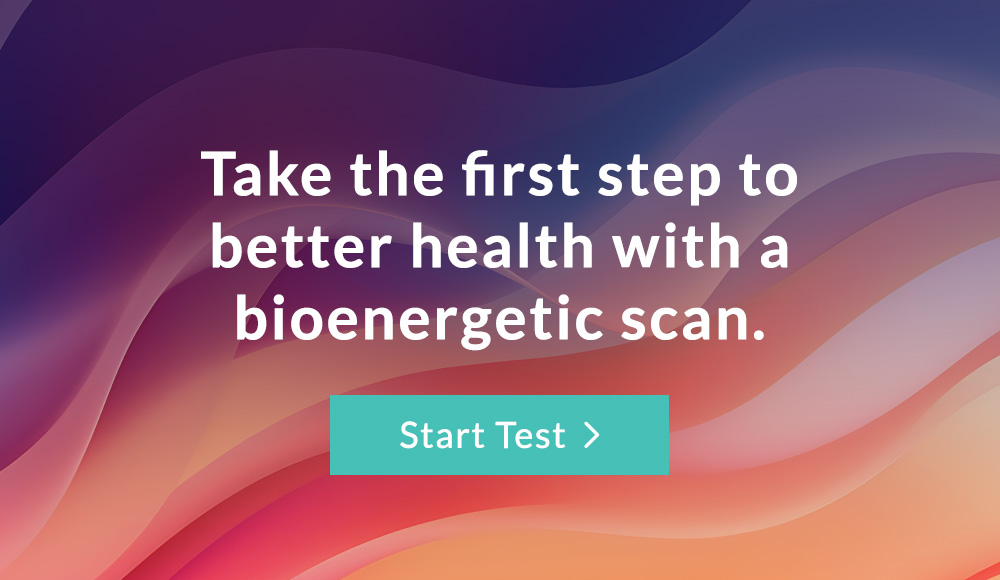
The Blood System and Your Health: Signs It’s Out of Balance
Most of us think of the circulatory system or the cardiovascular system, instead of the Blood System. Our bioenergetic scan process pulls from Traditional Chinese Medicine and uses the term “Blood System” to refer to the fluid that has more than a physical presence. It is one of the foundations of life. It has connections to the Spleen and Liver, both of which filter blood. It not only nourishes the body but also houses the mind and spirit. Blood deficiency, according to TCM, can lead to a wide range of health issues, from fatigue and pale complexion to anxiety and insomnia.
TCM practitioners use various methods, such as acupuncture and herbal remedies, to nourish the blood and correct imbalances. Blood is considered the mother of Qi, the vital energy or life force in TCM, highlighting its significance in this ancient healing practice.
For the purposes of reading your bioenergetic scan results, the Blood dial is part of our 14 areas of body system performance that are analyzed for bioenergetic stress through bioresonance testing. This system is separated from the Cardio Dial, but is intimately connected. The Blood System is responsible for circulating blood to all parts of the body, supplying oxygen and nutrients to the tissues while removing waste products.
It is closely tied to the Lymphatic System and the Immune System because it carries cells, such as white blood cells. Our goal with this post is to shed light on how the blood system works, its components, and its role, and help you maintain a healthy blood system!
The Components of the Blood System on Your Bioenergetic Scan.
Without blood, our bodily functions would cease, resulting in fatal consequences. Bioenergetic scanning looks at blood differently than traditional allopathic models. We incorporate functional health into our bioresonance interpretation. Several components make up the blood system, including:
- Red blood cells: also known as erythrocytes, constitute about 45% of the blood. They carry oxygen from the lungs to the entire body and, in turn, transport carbon dioxide back to the lungs for exhalation.
- White blood cells: or leukocytes, are the body’s defense system. They protect the body against diseases and foreign invaders.
- Platelets: support clotting, preventing excessive bleeding during injuries.
- Plasma: makes up the remaining 55% of the blood and is a yellowish fluid that transports nutrients, hormones, and proteins to the parts of the body that need them.
How Does the Blood System Work?
The heart is the powerhouse of the blood and circulatory systems. The pumping action moves blood around through the vessels and capillaries. The heart pumps oxygenated blood from the left ventricle into the arterial system, which carries it throughout the body. As the blood travels, it nourishes cells with oxygen and nutrients. From the cells, it picks up carbon dioxide and other waste products, delivering them to the lungs and kidneys for removal.
The Role of Red Blood Cells.
Erythrocytes are shaped uniquely to maximize their job—transporting oxygen from the lungs to the body’s tissues. They are disc-shaped, with a concave center, allowing for maximum surface area to carry oxygen. Each red blood cell contains a protein called hemoglobin. Hemoglobin binds with oxygen in the lungs, creating oxyhemoglobin, which gives the blood its red color.
If you have had a conventional A1C test, you have been given a blood snapshot of what your blood sugar looks like over the last 2-3 months. Glucose that remains in the blood binds to hemoglobin and coats it. A red blood cell lives for about 3 months, and it can live bound to glucose if your glucose is not being utilized by the cell, or there is not enough insulin.
Without red blood cells, our bodies would be deprived of oxygen, leading to tissue damage and eventually death. They also remove carbon dioxide, a waste product of cellular respiration, from the body. It binds to hemoglobin, forming carboxyhemoglobin, which is transported back to the lungs and exhaled.
The Role of White Blood Cells.
White blood cells, or leukocytes, are the warriors of the body, defending against disease and foreign invaders. They make up only about 1% of the blood system, but they play a crucial role in our health. There are several types of white blood cells, each with its own method of fighting off pathogens.
Neutrophils, the most common type of white blood cells, are the first to respond to an infection. They engulf and kill bacteria and fungi. Lymphocytes, another type of white blood cell, are responsible for adaptive immunity. They remember previous invaders and mount a swift response if the same invader tries to infect the body again.
The Role of Platelets.
Platelets, also known as thrombocytes, are tiny blood cells that help the body form clots to stop bleeding. When one of the body’s blood vessels is injured, a signal is sent out to attract platelets to the site of the injury. Here, they bind together to form a platelet plug, effectively blocking the hole in the blood vessel and preventing further blood loss.
Beyond forming the initial plug, platelets also release chemicals that activate the coagulation factors in plasma. This leads to the formation of a fibrin clot, which is stronger and more stable than the initial platelet plug. This clotting process is essential for preventing excessive blood loss during injuries.
The Role of Plasma in the Blood System.
Plasma is primarily water but also contains proteins, nutrients, hormones, and waste products. It is part of the clotting process, carrying the coagulation factors that are activated by platelets. It also transports nutrients, hormones, and proteins throughout the body. Furthermore, plasma carries waste products, like urea, to the kidneys for removal.
Blood Circulation: The Blood Superhighway.
Blood circulation is a continuous process. The heart, the engine of the circulatory or Cardiovascular System, pumps blood throughout the body via a network of blood vessels. This network includes arteries, which carry oxygenated blood away from the heart, capillaries, where nutrient and waste exchange occurs, and veins, which carry deoxygenated blood back to the heart.
How Functional Health Looks at the Blood System.
Functional health is a system/biology-based approach that focuses on identifying and addressing the root cause of health issues. It views the body as one integrated system, not a collection of independent organs divided by medical specialties.
When it comes to bloodwork, functional health practitioners look beyond traditional markers. They consider a wide array of factors, including nutritional status, hormonal balance, immune function, and metabolic processes. All the things that bioenergetics can test! By closely examining these factors, functional health practitioners can gain a comprehensive understanding of a person’s health and tailor treatments to address the root cause of health problems.
The Blood System and Nutrition.
Maintaining a healthy blood system is pretty important for overall health. Food such as onions and garlic works to protect blood vessels from arterial plaques. They have antimicrobial properties that fight infections and improve immunity. They also support sulfation, part of liver detox.
Don’t forget to include lots of foods high in Vitamin C. This nutrient improves circulation and contributes to collagen, a building block of the body. We have found liposomal supplements like Whole Food Vitamin C to be very supportive for our clients and practitioners.
Foods high in omega-3 fatty acids protect against circulatory disturbances and support heart health. Try to put fatty fish on your menu a few times a week, or take an Omega Supplement like Bio Omega 3.
Eat a balanced diet rich in:
- Vitamin K: for blood clotting
- Arginine: supports circulation, nitric oxide production, hair growth, muscle growth, and liver detox.
- Iron + Copper: critical in making healthy red blood cells.
- Niacin (B3): supports circulation.
- Iodine: needed for thyroid function, as this supports the transport of iodine to the blood.
- Vitamin B6: supports circulation. Fights free radicals, which may affect arteries and blood vessels.
- Vitamin B9 and B12: support the function of red blood cells.
- Vitamin A: supports stem cell development into red blood cells.
- Vitamin E: supports blood circulation through widening blood vessels to allow for unimpeded blood flow. Required in the production of red blood cells and the prevention of clotting.
Can chili peppers help your Blood System? Capsaicin, an active component of hot peppers, may improve blood flow. Capsaicin is included in homeopathic remedies that support the pain response. Adding chili peppers or other “hot” spices to your food can help with circulation in the gut.
Hydration is also essential, as water makes up a significant portion of your blood! Adequate hydration helps maintain blood volume, which aids in blood pressure balance, nutrient and waste transport.
The Blood System and Your Bioenergetic Scan
We measure the energetic stress of the body and look for connections or “roots” of that stress. If you have a stressed Blood Dial on your scan, potential links may be:
- Circulation: the integrity of the vessels needs to be healthy
- Iron: impacts oxygenation of the blood
- Babesia, Borrelia, Bartonella: these are tick-borne microbes that can stress the blood and multiple systems
- Heart
- The Cardiovascular Dial
- The Lymph Dial
- The Immune Dial
Herbs: Your Ally in Blood Protection
- Licorice Root can help support sodium and potassium levels, which in turn can help maintain balanced blood pressure.
- Gen Intrinsic supports the Blood System through Lymph drainage.
- Green Tea may improve the functioning of cells lining blood vessels. Brewing your tea and drinking it throughout the day, hot or cold, is beneficial! Our Green Tea Catechins is a supplement that delivers the benefits of green tea, without the taste or caffeine!
- Ginkgo biloba works to improve blood flow by reducing the stickiness of platelets and dilating blood vessels.
DISCLAIMER: Balanced Health, LLC/CBH Energetics and any parent, subsidiary, affiliated or related entities and companies do not provide medical advice or services. This post and the bioenergetic products and services offered by Balanced Health, LLC/CBH Energetics including, but not limited to, bioenergetic tests, bioenergetic scans, bioenergetic reports and related products and services (collectively the “Bioenergetic Products and Services”) are designed for educational and informational purposes only and are not intended to diagnose, treat, cure, or prevent any disease, condition, complaint, illness or medical condition and are not a substitute for professional services or medical advice. Testing is not used for the purpose of obtaining information for the diagnosis, prevention, or treatment of disease or the assessment of a health condition or for identification purposes.
